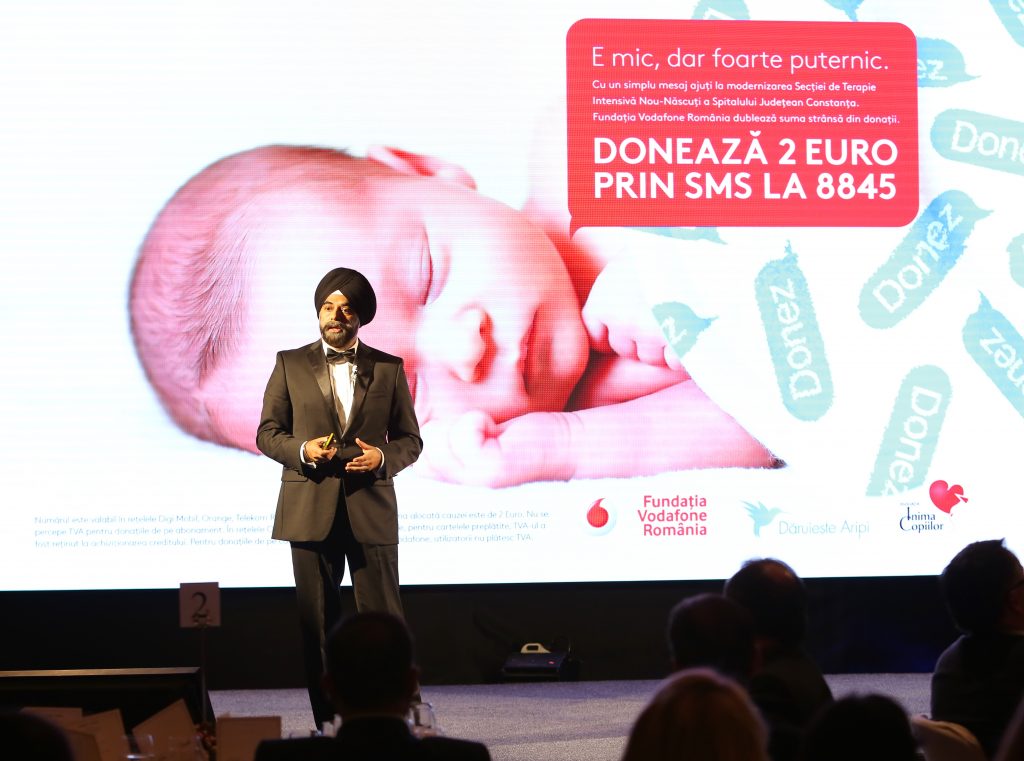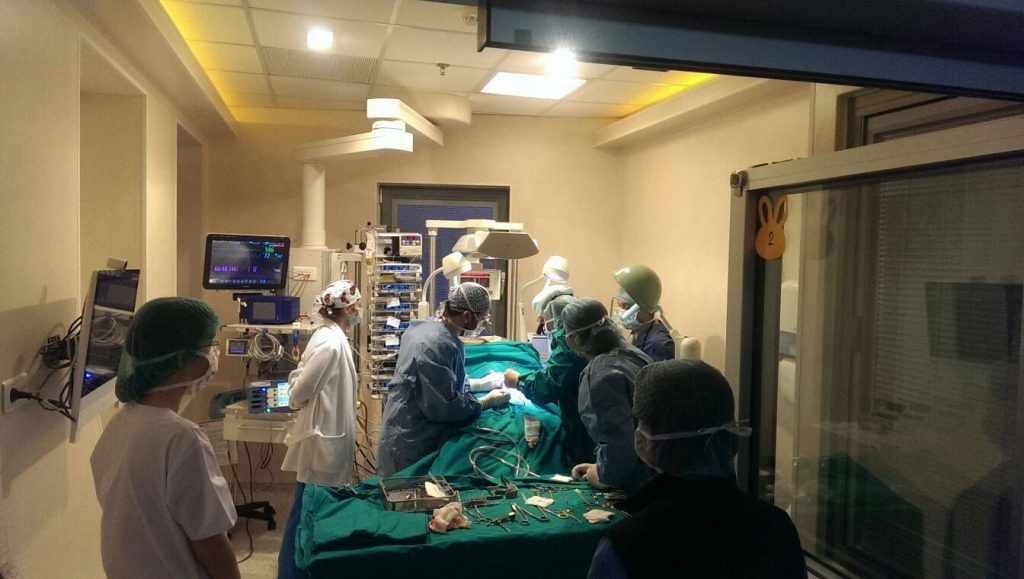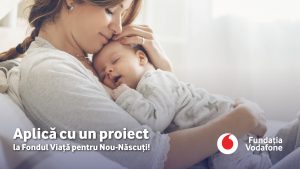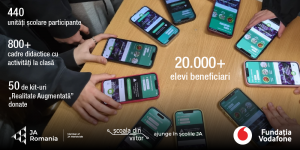By Raluca Ion
Dr. Cătălin Cîrstoveanu, chief of the NICU department of the Marie Curie Hospital in Bucharest, was nearly there. Just a few more minutes to the Constanta County Hospital where a newborn was waiting to be transferred to Bucharest.
But it was too late: 15 minutes before reaching the hospital, the child died. It happened in 2013, remembers Alina Vasea, founder of the Give Wings Foundation.
“I saw his small purple leg hanging out from under the sheet. Then something snapped in me and I knew I had to do something about it.”
After a short time, the child’s twin brother, who had been transferred to the Grigore Alexandrescu Hospital in Bucharest, died too. “I do not know if these children would have had a chance to live. What I do know is that the hospital, with its precarious conditions, didn’t give them any chance at all”, says Alina Vasea.
A Long-Term Help
The Children’s Heart Association and the Give Wings Foundation want to turn the NICU department of the Constanta County Hospital into a place that offers children a real chance to survive.

There is a need for a 1.4 million euro investment, and the Vodafone Romania Foundation announced during its annual Gala that it will support the project and double the amount raised during the fund raising campaign. Those who wish to donate can do so by sending a text message valued at 2 euro to 8845. Moreover, companies can choose to direct 20% of their profit tax for this cause. If everything goes well, the unit should be ready within a year.
“It’s a way to help all children on the long-term, not just the individual cases. It’s a way to help for many years to come”, says Alina Vasea.
The foundation she founded has also developed within the Paediatrics section at the Constanta County Hospital a centre for the diagnosis, treatment, monitoring and support of children suffering from onco-hematologic and rheumatic diseases in the south-east of Romania.
The Constanta Clinical Emergency Hospital was built in 1968, approximately 50 years ago, and it looks as if nothing has been done to improve it ever since. “There are cockroaches, the furniture is old, there are bacteria, and nosocomial infections. At that time, the neonatal unit was spread in four places, on two floors”, she explains.
When dr. Cîrstoveanu got here in 2013 something unusual happened: forgetting any professional pride, the doctors started asking him how they might help increase infants’ chance to survive. So, with the help of the Give Wings Association, a first project to improve the hospital conditions amounting to 40,000 euro was put in place.
Meanwhile, the Constanta County Hospital allotted approximately 700 square meters for a new NICU section.

There are 700 old square meters of rusty sinks, walls covered in oil-based paint, outdated machines. Each week, one infant dies in the hospital’s NICU before reaching one month of age, while the mortality rate in the Constanta County is three times higher than that in the EU. The newborns from four counties are brought there in case they become severly ill.
“That’s where the problem is. It’s there that those infants perish”.
“This will be the first significant project in Romania carried out by two Romanian associations instead of one”, says Alex Popa, the president of the Children’s Heart Association, which built the NICU, the Pediatric Cardiovascular Surgery and the Neurosurgery units at the Marie Curie Hospital. There are two things that make the difference between life and death: the doctors and the infrastructure.

“The worst situation is with the Intensive Care Unit, and that is where the problem lies. There is where those infants perish. You cannot control infections if there is no infrastructure.”
“Even if you do whatever it takes, you cannot change the airflow’s natural course so that it wouldn’t carry the microbes from one place to another. And this is all about infrastructure. At Marie Curie, we have Hepa 12 filters in every booth, and these are operating room grade filters”, says Alex Popa. Doctors were able to performe a surgery in one of those booth, on the heart of a 5-day newborn.

Positive Pressure Booths to Minimize Patients’ Infection Risk
Marie Curie’s NICU, he notices, is the most modern section of this type both in Romania, and in Eastern Europe. Patients’ booths have positive pressure, which means that the inside air pressure is higher than the air pressure in the hallways, thus minimizing the possibility of microbes being carried to the booth. “We have very strict rules concerning hand washing, patients washing, and they are all very well supported by the infrastructure. In each booth, there is a special sink to be used only for that particular patient”, explains Alex Popa.
The same standards will be applied at the Constanta NICU. “There is a difference between wanting and being able to do something and this proved to be an issue when we built the Cardiosurgery – we didn’t know much and we had a lot of issues to solve. After building the cardiology section, which was rather easy, we built the NICU. Despite our expertise, we still had problems which I believe now we know how to solve or how to avoid”, says Alex Popa.
A successful model makes people trust you. The Children’s Heart members had to handle the hospital personnel’s reluctance when they told them that each little NICU patient can have his booth where the light needn’t stay on day and night, where they wouldn’t be disturbed by doctors’ intervention at a nearby bed. They claimed they wouldn’t be able to tell when children got worse. “These children do not show any signs when they are sick, they simply lie in their beds. And you depend on the monitors to show you the vital signs. And when you get a proper monitoring system, which also has a hallway alarm, you don’t have that problem anymore. It is important for people to see that it works”, explains Alex Popa.
His Children’s Heart colleague, Enona Chiriac, shows us how they gauge their success, the ultimate proof that the system works properly. She gives me the example of children from a different unit who had no chance of survival. “There are children older than a year, a year and a half, who survived thanks to the high sterility conditions, the proper nutrition, and the proper care. Now there are only three admitted patients left because one already went home to his twin sister”. In this case, success is based on two requirements: the doctors and the infrastructure.
Source of article: https://republica.ro/znu-stiu-daca-acesti-copii-ar-fi-avut-o-sansa-la-viata-ce-stiu-e-ca-spitalul-nu-le-a-oferit-o-sansa-oamenii




